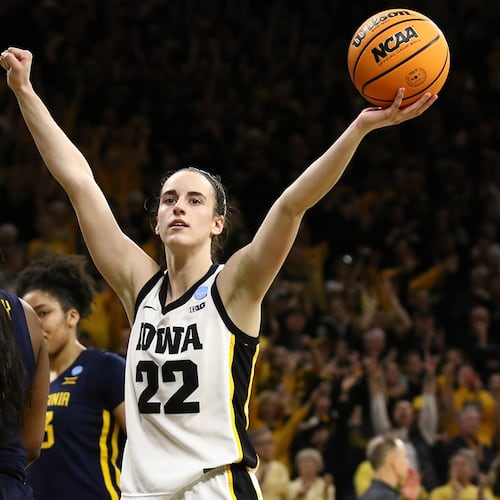The Braves have a 25-year-old second baseman who’s a two-time All-Star and who’s under a not-lavish contract through 2027. They have an even younger second baseman who, through 14 big-league games, has an OPS of 1.123 and a batting average of .420. The former is Ozzie Albies, who’s rehabbing a broken foot. The latter is Vaughn Grissom, the latest in a series of dandy rookies.
Obvious question: How can the Braves fit both into a nine-man lineup?
Obvious answer: There isn’t one.
Not every flashy rookie lands in Cooperstown. Austin Riley made like Babe Ruth over his first month in the majors. His OPS in May 2019 was 1.143. Then opponents started throwing breaking balls, as opponents will. His OPS for July was .480. The Braves made the playoffs; Riley didn’t make their postseason roster. He has since sorted himself out. At 25, he’ll draw MVP votes.
The way the Braves sought to ease Ronald Acuña’s return from ACL surgery offers a hint as to what will happen with Albies. He could play second base one day, DH the next, rest the next. Even after he’s activated, which doesn’t figure to happen until mid-September, he’ll need to round into game shape. He hasn’t played since June 13.
As for Grissom: If he keeps producing at anywhere near this rate, he’ll keep playing. He might take a turn in left field. With Adam Duvall lost to injury and Marcell Ozuna and Eddie Rosario producing close to the minimum, left field has fallen mostly to Robbie Grossman, a 32-year-old journeyman. The Braves could get by with Grissom playing an occasional game out there.
He might also DH, albeit in small doses. He’s a right-handed hitter. So is William Contreras, who became an All-Star designated hitter at age 24. But Contreras catches a couple of games a week. Those could become Grissom days.
This is the sort of issue – we can’t call it a problem – teams don’t mind facing. Having many options beats the heck out of having few. The Braves have 36 regular-season games remaining. They could work a maximum of 22 playoff games. They’ll need the fullest roster possible. Grissom gives them an option they didn’t foresee, at least not so soon. That’s a blessing.
Beyond the 2022 postseason, Grissom provides cover for the Braves’ biggest personnel decision. Dansby Swanson can become a free agent in November. The club wants to keep him, but it wanted to keep Freddie Freeman, too. When GM Alex Anthopoulos decided Freeman was out of range, he spent four prospects of note to land Matt Olson. Should Swanson opt to exit, his replacement would be in-house.
Since landing Grissom in Round 11 of the 2019 draft, the Braves always believed he would hit. Over four tiers and three seasons of minor-league ball, he managed an OPS of .867, with 75 extra-base hits. He worked 161 games at shortstop, 33 at second base, 29 at third. Per MLB.com, his lowest rating was 45 for fielding. His hitting drew a 55.
The Braves are pleased with how he has handled second base. He hasn’t made an error, though 14 games aren’t a huge sample size. It’s not impossible that he could function as a big-league shortstop, which would be a big deal if Swanson signs elsewhere.
Whenever baseball folks are asked about a seeming glut at a position, they all say the same: “These things tend to work themselves out.” It’s uncanny how often they do. And let’s be clear: Body-of-work-wise, the two aren’t nearly equal. Albies has been a key contributor on four consecutive National League East winners. Grissom has had two splendid weeks.
The Braves haven’t drawn a down-the-road plan for Albies/Grissom. They’re trying to win another World Series first. But assuming Albies returns to form; assuming Grissom doesn’t go 0-for-his-next-50; assuming Swanson re-ups here … the Braves would face some choices.
Grissom in left field might be an answer. Albies as part of a trade for Shohei Ohtani might be an answer. (It appears the Angels are for sale.) Until then, we’re all just guessing. This, though, is the fun kind of guessing.
About the Author
The Latest
Featured


